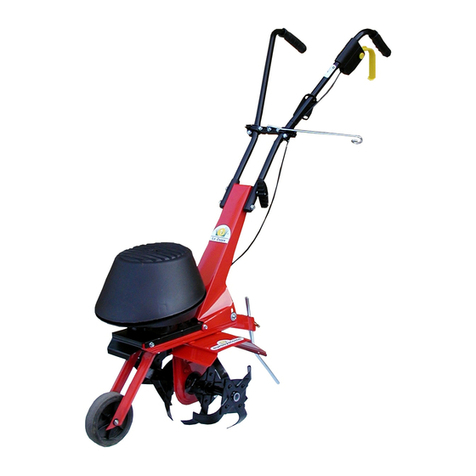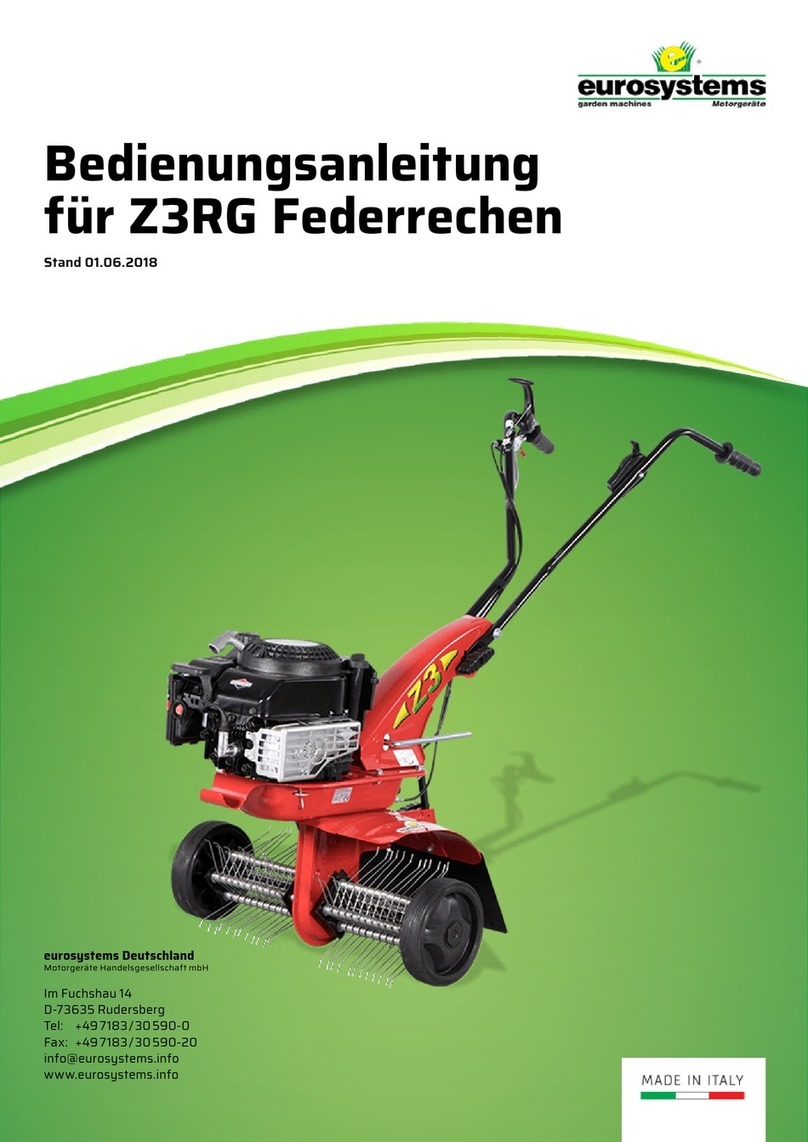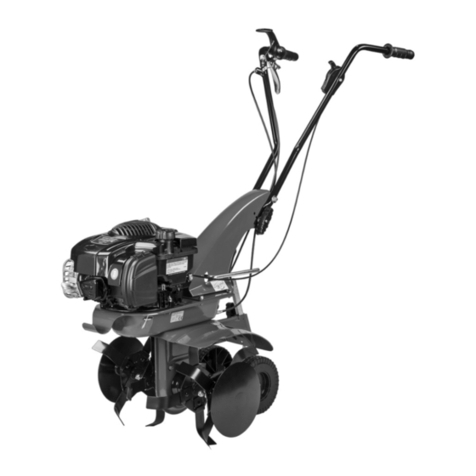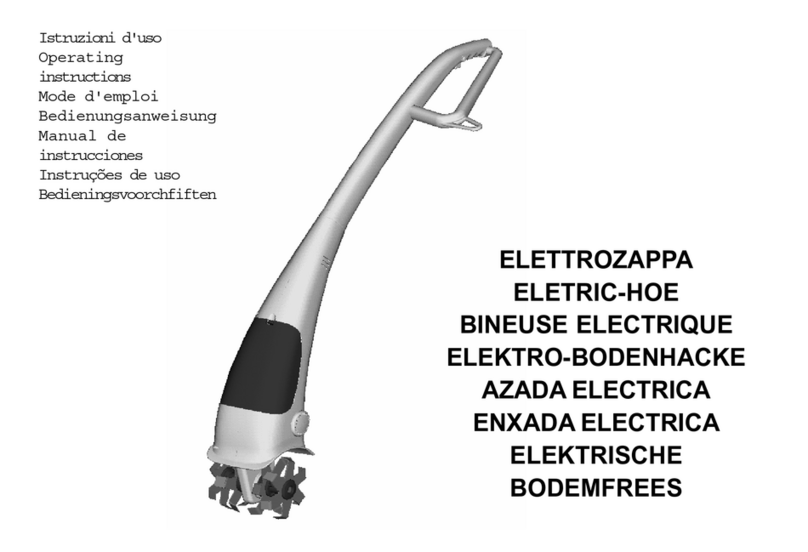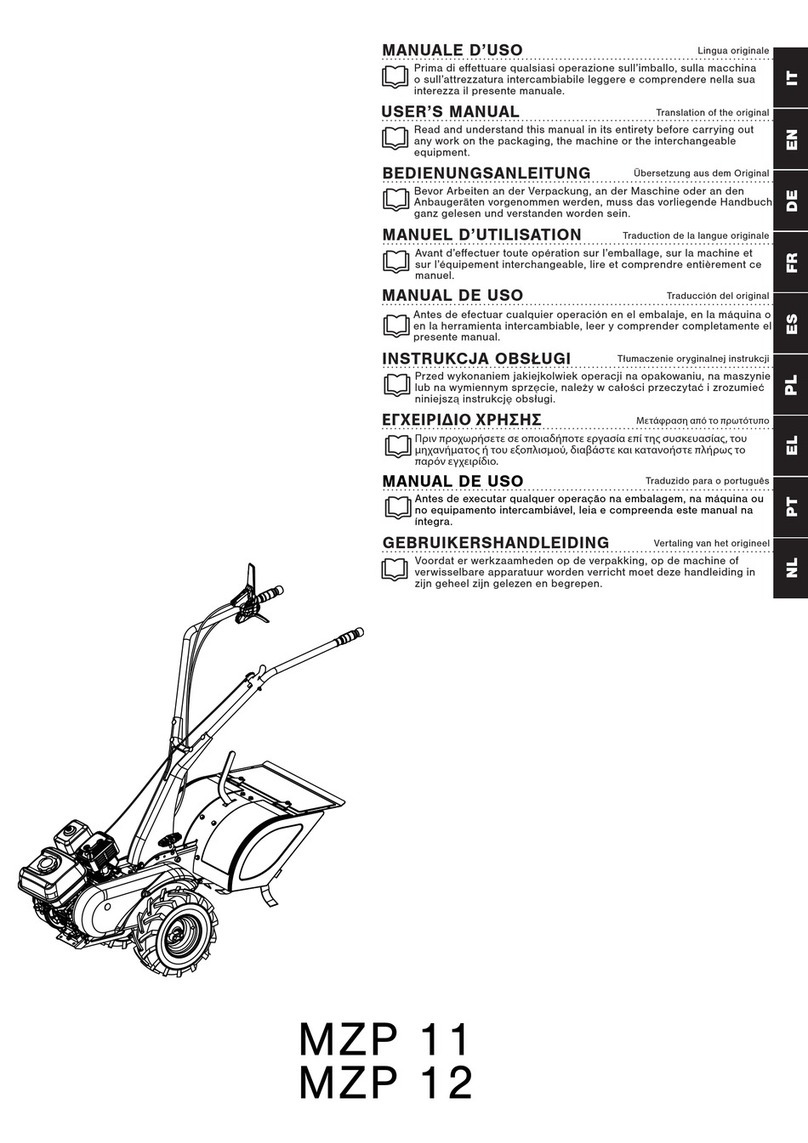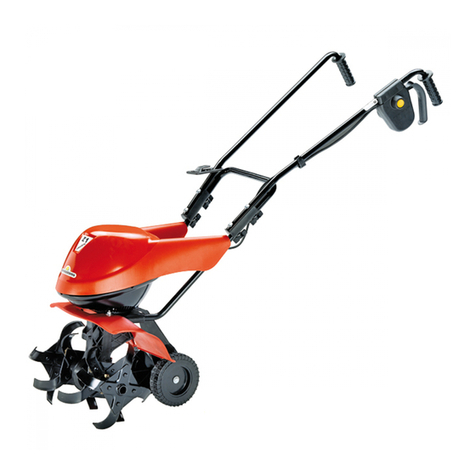Indice
Introduzione
Condizioni di utilizzazione
Suggerimenti di sicurezza
Istruzioni d’ uso
Trasporto
Montaggio
Regolazione
Manutenzione
Dati tecnici
Rumore aereo
Guasti
Pericolo grave per
l’incolumità dell’operatore
e delle persone esposte.
INTRODUZIONE
Gentile cliente, lei ha acquistato una nuova attrezzatura. La ringraziamo per la ducia accordata ai ns.
prodotti e le auguriamo un piacevole utilizzo della sua macchina.
Abbiamo creato queste istruzioni per I’uso allo scopo di assicurare, n dall’inizio, un funzionamento privo
d’inconvenienti. Seguite attentamente questi consigli, avrete la soddisfazione di possedere per molto tempo
una macchina che funziona a dovere.
Le nostre macchine, prima di essere fabbricate in serie, vengono collaudate in maniera molto rigorosa e, durante
la fabbricazione vera e propria, sono sottoposte e severi controlli. Ciò costituisce, per noi e per voi, la migliore
garanzia che si tratta di un prodotto di riprovata qualità.
Questa macchina é stata sottoposta a rigorosi test neutrali, nel paese d’origine, e risponde alle norme
di sicurezza in vigore.
Per garantire questo, é necessario utilizzare esclusivamente ricambi originali.
L’utilizzatore perde ogni diritto di garanzia qualora vengono utilizzati ricambi non originali.
Con riserva di variazioni tecnico-costruttive. Per informazioni e per ordinazioni di pezzi di ricambio si prega
citare il numero di articolo e il numero di produzione.
nDATI PER L’IDENTIFICAZIONE (FIG. 1) L’etichetta con i dati della macchina e il numero
di matricola è sul anco sinistro del motocoltivatore, sotto il motore (g.1). Nota - Nelle eventuali richieste
di Assistenza Tecnica o nelle ordinazioni delle Parti di Ricambio, citare sempre il numero di matricola del
motocoltivatore interessato.
nCONDIZIONI DI UTILIZZAZIONE - LIMITI DUSO
Il motocoltivatore è progettato e costruito per eseguire operazioni di zappatura o falciatura di terreni erbosi
e deve lavorare esclusivamente con attrezzi e con ricambi originali. Ogni utilizzo diverso da quello sopra
descritto è illegale; comporta, oltre al decadimento della garanzia, anche un grave pericolo per l’operatore e
per le persone esposte.
n NORME DI SICUREZZA
Attenzione: prima del montaggio e la messa in funzione leggere attentamente il libretto istruzione. Le
persone che non conoscono le norme di utilizzazione non possono usare la macchina.
1. L’ uso della macchine è vietato ai minori di 16 anni e alle persone che hanno assunto alcol, medicine
o droghe.
2. La macchina è stata progettata per essere utilizzata da un solo operatore addestrato. L’utilizzatore
dell’apparecchio è responsabile di danni arrecati ad altre persone ed alle loro proprietà; controllare
che altre persone, sopratutto i bambini stiano lontani dalla zona di lavoro (10 mt.).
3. Togliere corpi estranei dal prato prima di iniziare il lavoro. 1
ITALIANO
Istruzioni d’uso originali

